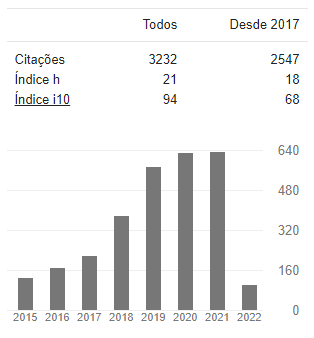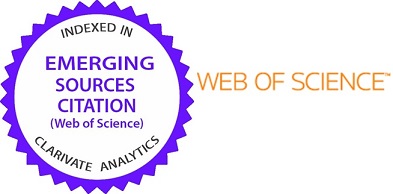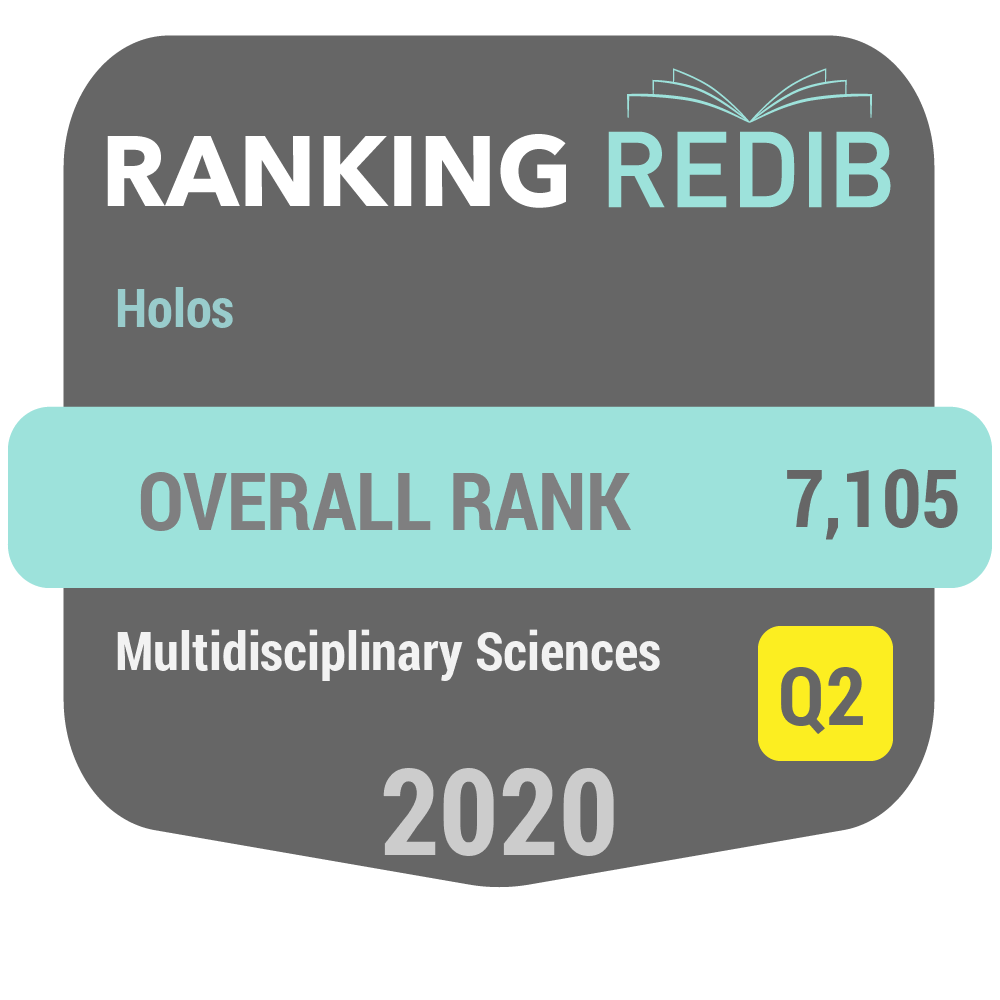CONTRIBUTION TO THE PHYTOCHEMICAL STUDY AND CHEMICAL TESTS OF THE EXTRACTS OF Citrus limonium (LEMON) and Capsicum frutescens L. (CHILLI PEPPER)
DOI:
https://doi.org/10.15628/holos.2015.2462Palavras-chave:
Citrus limonium, Capsicum frutescens L., Teste fitoquímico, Atividade antioxidante, Fenóis totaisResumo
Use of natural medicine has been used by man since time immemorial, and this use has grown considerably in recent times. Thus, this study aims to make a comparator analysis regarding the phytochemical test, antioxidant activity and total phenolic content of the extracts of the leaves in ethanol and their respective fractions of Citrus limonium (lemon) and Capsicum frutescens L. (chilli pepper). To compare them was observed that ethanol extract of both plants showed the better antioxidant activity, Capsicum frutescens L. with 204.60 ppm and 99.07 ppm with Citrus limonium. With regard to the phenolic content of the hexane extract and lemon extract in ethanol pepper were those that showed a higher content. Overall, it was noted that Citrus limonium excelled both in relation to their antioxidant activity and the phenolic content.
Downloads
Referências
BARROSO, G. M. Sistemática de Angiospermas do Brasil. v.2. Imprensa Universitária, Universidade Federal de Viçosa, Viçosa. 1986.
BONOLI, M.; VERARDO, V.; MARCONI, E.; CABONI, M. F Antioxidant Phenols in Barley (Hordeum vulgare L.) Flour: Comparative Spectrophotometric Study Among Extraction Methods of Free and Bound Phenolic Compounds. Journal of Agricultural and Food Chemistry. v. 52, p. 5195-5200, 2004.
BRAND-WILLIAMS, W.; CUVELIER, M. E.; BERSET, C. Use of a free radical method to evaluate antioxidant activity. Lebensmittel – Wissenschaft Technologie. v. 28, n. 1, p. 25-30, 1995.
CALIXTO, J. B. Twenty-five years of research on medicinal plants in Latin America: a personal review. Journal Ethnofarmacology. v. 100, p. 131-134, 2005.
CARVALHO, J. E. Fitoterápicos: Alimento ou Medicamento? In: MERCADANTE, A. Z.; BOBBIO, F. O.; BOBBIO, P. A.; PEREIRA, J. L.; PASTORE, G. M., ed. Ciência de Alimentos: avanços e perspectivas vol II. Faculdade de Engenharia de Alimentos da Unicamp, Campinas, 196-202, 2001.
DIMITRIOS, B. Sources of natural phenolics antioxidants. Trends in Food Science & Technology. v. 17, n. 9, p. 505-512, 2006.
ECONOMOS, C.; CLAY, W. D. Nutritional and health benefits of citrus fruits. Food, Nutrition and Agriculture. v. 24, n. 1, p. 8-11, 1999.
MATOS, E. H. S. F. Dossiê Tecnico: Cultivo de limão. Centro de Apoio ao Desenvolvimento Tecnológico da Universidade de Brasília – CDT/UnB. 2007.
MATOS, F. J. A. Introdução a fitoquímica experimental. 3 ed. – Fortaleza: Edições UFC, p. 47-54, 2009.
REIFSCHNEIDER, F. J. B. (Org.) Capsicum: pimentas e pimentões no Brasil. Brasília: Embrapa Comunicação para Transferência de Tecnologia/Embrapa Hortaliças, 2000.
SANTOS, M. D.; BLATT, C. T. T. Teor de flavonóides e fenóis totais em folhas de Pyrostegia venusta miers de mata e de cerrado. Revista Brasileira de Botânica. v. 21, n. 2, São Paulo, ago. 1998.
SILVA, M.L.C.; COSTA, R.S.; SANTANA, A. S.; KOBLITZ, M. G. B. Compostos fenólicos, carotenóides e atividade antioxidante em produtos vegetais. Semina: Ciências Agrárias, Londrina, v. 31, n. 3, p. 669-682, jul./set. 2010.
VEIGA JUNIOR, V.F.; MELLO. J. C. P. As monografias sobre plantas medicinais. Revista Brasileira de Farmacognosia. v. 18, p. 464-471, 2008.









































